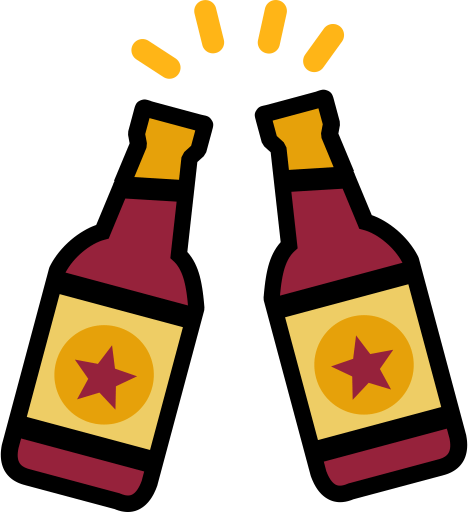We feel like doing a brewday on Sunday, but as we don’t have time to visit our local homebrew-shop, we want to use what we have in stock. The plan is to make 20 liters of stout.
What we’ve planned for fermentables:
4 kg pilsner malt @ 3.7 EBC (=48.3%)
2 kg Munich malt @ 13 EBC (=24.1%)
800 g Carared @ 48 EBC (=9,7%)
500 g Chocolate B @ 900 EBC (=6%)
500 g Amber @ 70 EBC (=6%)
With a mash profile of
45 minutes @ 62C / 143F
30 minutes @ 72C / 161F
5 minutes @ 80C / 176F
During the boil of 60 - 90 minutes
115 g Saaz for the entire time
500 g sugar for the last 30 minutes
with a Lallemand Windsor yeast, fermenting at 20C / 68F.
According to Brewfather, this should end in a beer with around 8% ABV, around 70EBC and 49 IBU.
My 2 questions:
Do you guys think this results in a beer you'd drink?
Any tips for modifications to the recipe?


I’d say you’re pretty safe with that recipe. Since you don’t have any roasted barley or black malt, 500g chocolate seems fine.
I wouldn’t bother with putting the chocolate malt at the end, I’ve done it both ways and did not see any difference beyond the process being messier and more complicated. It also depends on your water chemistry though, so might want to look into that. You generally need harder water for darker beers. John Palmer’s book used to have a very nice chart for hardness of water vs darkness of beer, but it seems to have disappeared from the first few search results (along with the book itself, used to be available for free as a website). I’ll have to check if I have it saved anywhere.
It also depends on your personal preferences, myself I like a nice chewy stout with enough roast in it to balance it out. For drier beers, I’d go for less roast.
Thanks! The other poster mentioned a max of 5% in the grain bill, which I too found on the website of my local HBS. So I think I’m going to tweek it a little bit.
And I was aiming for a beer that is more sweet than dry. Am I correct in thinking the shorter 62 and longer 72 (45 and 30 minutes, instead of 60 and 15) helps to create more complex sugars that survive the yeast?
I really wouldn’t worry at the extra 1%. Those numbers are more like guidelines. Sure, you wouldn’t want your grist to be 50% chocolate malt but there’s some wiggle room in there.
If you enjoy the flavours chocolate malt gives you, don’t sweat it. If you like them less, reduce it. But don’t reduce it because dogma says not more than 5%.
I brewed a black IPA (was going for a rye stout to be fair, but I may have gone overboard with the hops) once using 1.4 kg / 6.4 kg dark grains, out of which 0.5 kg was Chcolate Rye (true, chocolate rye, not ‘simple’ chocolate, though I do have recipes I did with 0.5 kg chocolate to around the same total quantity), 0.2 kg roasted barley and 0.15 kg black malt - the rest was some weird stuff from Dingemans, 0.3 kg Coffee Mroost 450 and 0.250 kg toasted rye. The base was 3+2 kg pilsner + dark munich. I did some water chemistry adjustments for this one. I like black beers though so your mileage may vary.
You are correct with regards to the temperatures but it does need to be tailored to your setup and also depends on what yeast you use. For example, some yeasts have issues fermenting sugars as ‘simple’ as 3-4 glucose units, whereas others are absolute beasts (looking at you, belgian yeasts) and will eat basically anything, no matter your mash schedule.
Thanks again, I think I’ll just keep it the way it is in the post. So far, all but one of my beers turned out perfectly drinkable, if not always what I had in mind when writing the recipe.